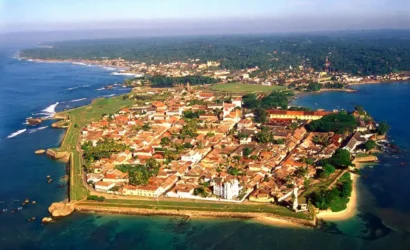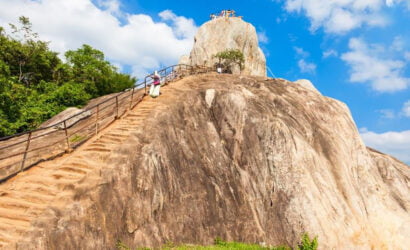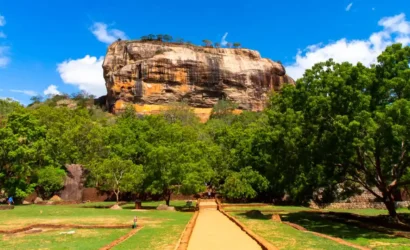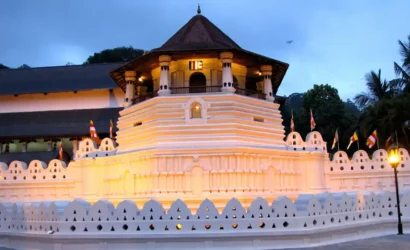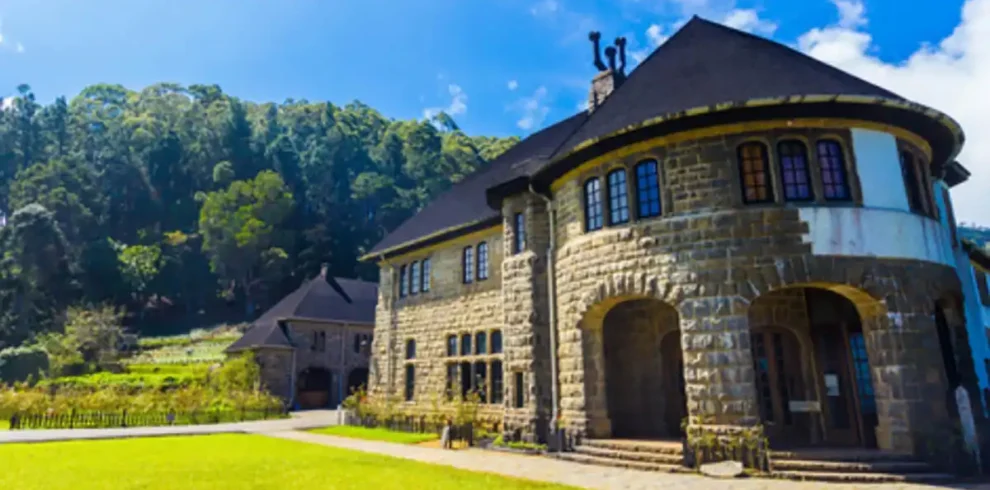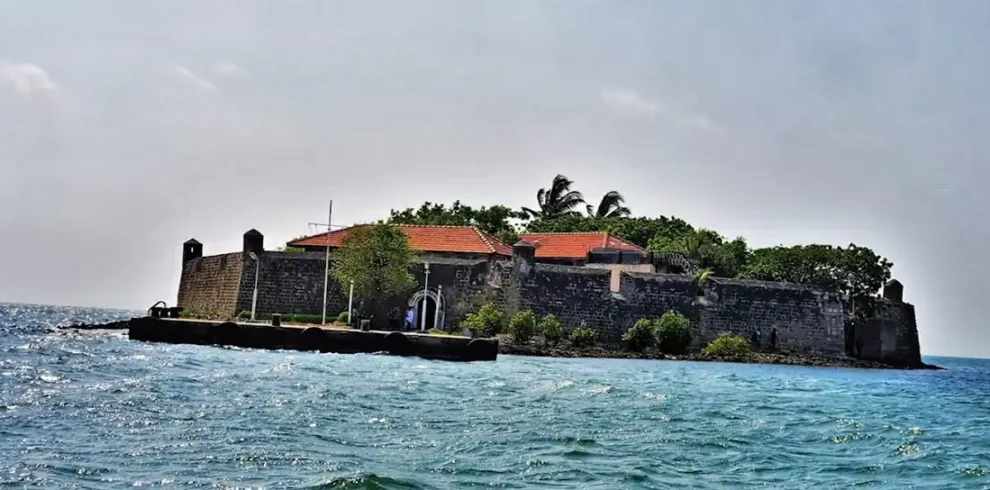The Sacred Tooth Relic Temple
Dalada Maligawa, or the Temple of the Tooth Relic, stands as a key Buddhist temple in Kandy, Sri Lanka. This revered site houses a tooth relic believed to belong to the Buddha and attracts thousands of pilgrims and visitors each year. The temple’s stunning architecture and intricate decorations showcase its deep spiritual significance and cultural importance.
Visitors can explore the temple’s ornate halls, view precious relics, and witness traditional ceremonies that highlight Sri Lanka’s vibrant Buddhist traditions. As a central cultural landmark, the temple serves as a spiritual hub and offers a glimpse into the rich history and heritage of Sri Lankan Buddhism.
Historical Background
Origins: King Vimaladharmasuriya I established the Dalada Maligawa, or Temple of the Tooth Relic, in the 16th century. He commissioned the construction to enshrine the sacred tooth relic of the Buddha. The relic had been brought to Sri Lanka from India during the 4th century CE under King Kithsirimevan’s reign.
Historical Significance: Sri Lankan history long associated the tooth relic with royal authority and legitimacy. People widely believed that the holder of the relic possessed the divine right to govern the country. As a result, the temple has played a crucial role in Sri Lanka’s political and cultural spheres. Its prominence as a spiritual and political center highlights its significant influence on shaping the nation’s history and heritage.
Architectural Highlights
- Facade: The architecture of the temple proudly displays the grandeur of the Kandyan period through intricate woodwork, ornate carvings, and vibrant paintings.
- Inner Sanctum: A series of gold caskets enshrine the relic. The most sacred relic resides in a highly decorated stupa within the temple complex.
- Kandyan Art: The temple showcases classic Kandyan art. Its murals and carvings vividly depict various aspects of Buddhist teachings and Sri Lankan history.
Visiting the Temple
- Entrance: Visitors enter through the grand gateway known as the “Maha Vishnu Devale,” which leads to a courtyard encircled by a moat.
- Ceremonial Activities: Visitors can witness the daily rituals and ceremonies at the temple, including the “Pooja” (offering ceremonies). Performers carry out these rituals with great devotion, often accompanied by traditional music and dance.
- Attire: Visitors must dress modestly, ensuring their shoulders and knees are covered. They must remove their shoes before entering the temple premises.
Key Attractions
- The Relic Chamber: The most sacred part of the temple, where the tooth relic is enshrined, is not open to casual visitors. However, visitors can view the outer chambers and the ornate gold casket that houses the relic.
- The Museum: The temple complex includes a museum that displays artifacts, religious items, and historical objects related to the temple and Sri Lankan Buddhism.
- The Royal Palace: Adjacent to the temple, the old Royal Palace is part of the complex and offers insights into the royal history of Kandy.
Festivals and Events
- Esala Perahera:The Esala Perahera is a major festival at the Dalada Maligawa. It occurs annually in July or August. This grand procession features decorated elephants, traditional dancers, drummers, and a replica of the tooth relic paraded through Kandy’s streets.
- Other Celebrations: The temple also hosts various religious and cultural festivals throughout the
Dalada Maligawa, the Temple of the Sacred Tooth Relic, embodies Sri Lanka’s deep spiritual and cultural heritage. Its rich history and stunning architecture draw visitors from around the world. As a crucial religious site, it offers profound insights into Sri Lanka’s spiritual life. Whether you are captivated by its spiritual significance, historical depth, or architectural splendor, visiting Dalada Maligawa provides an unforgettable experience. It reveals a deep understanding of Sri Lanka’s soul.
Highlights of Tooth Palace
- Sacred Relic Chamber: The most revered area, where the tooth relic is enshrined in a series of elaborately decorated gold caskets.
- Intricate Architecture: Features stunning Kandyan-era woodwork, carvings, and murals depicting Buddhist teachings and Sri Lankan history.
- Daily Rituals (Thevava): The temple conducts daily rituals three times a day, offering flowers, incense, and oil lamps to the Sacred Tooth Relic, creating an atmosphere of deep spiritual reverence.
- Esala Perahera: This grand annual procession, held in July or August, is one of Sri Lanka's most famous cultural events. It features traditional dancers, drummers, and elephants adorned in elaborate costumes, with a replica of the Sacred Tooth Relic paraded through the streets of Kandy
- Historical Significance: The Temple of the Tooth has played a crucial role in Sri Lanka's history, symbolizing the right to rule the country, and has been a focal point of both religious and political power.
- Museum: The temple complex includes a museum that showcases various artifacts related to the history of the Sacred Tooth Relic and the temple itself, offering visitors a deeper understanding of its cultural and religious importance.
- UNESCO World Heritage Site: Recognized as a UNESCO World Heritage site, the Temple of the Tooth Palace is acknowledged for its cultural, religious, and historical value, attracting pilgrims and tourists from around the globe.

